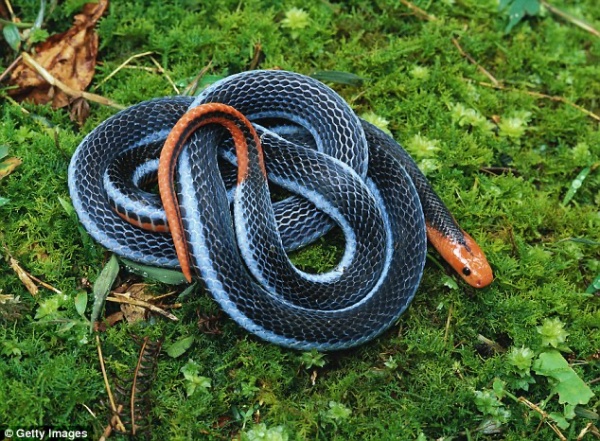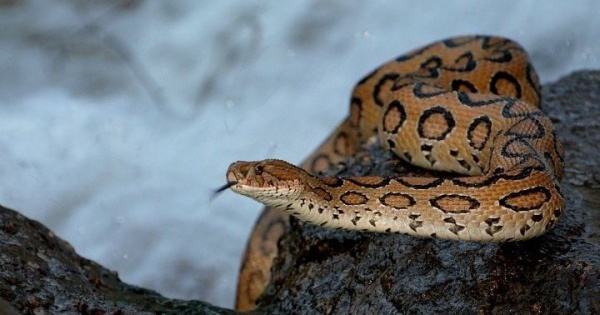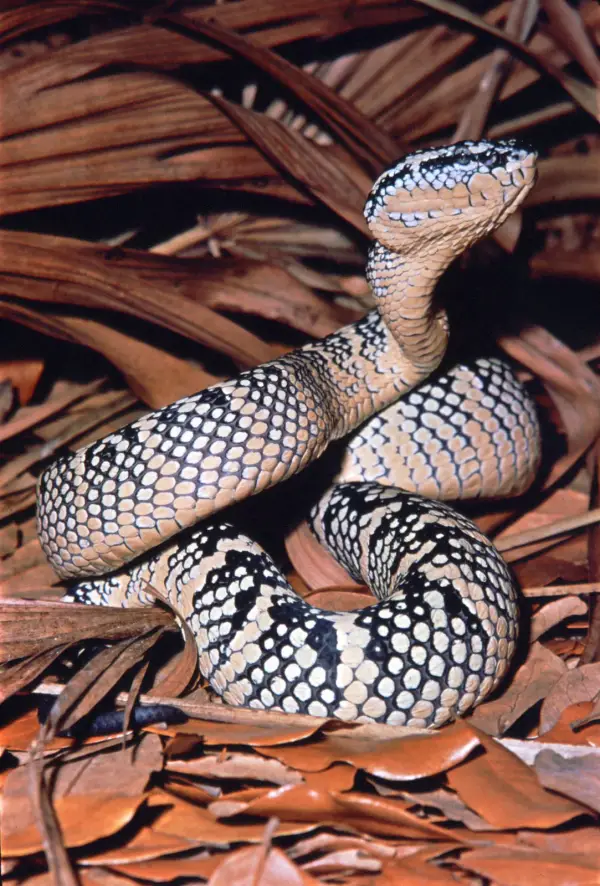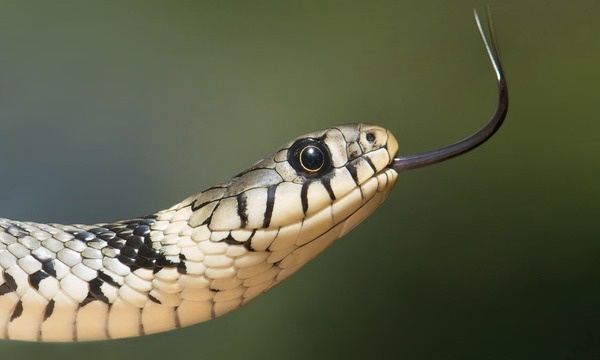Snakes with very potent venom aren’t always the most dangerous to people. Most just want to be left alone and won’t seek out encounters with humans. From the colorful-but-deadly blue Malayan coral to the sometimes indistinguishable cottonmouth, here are the most venomous snakes around the world.
1. Inland Taipan

Considered the world’s most venomous snake, Australia’s rare and reclusive inland taipan mounts rigorous self-defense when provoked, striking with one or more bites. What makes the snake particularly deadly isn’t just its high toxicity, but an enzyme that helps accelerate the venom’s absorption into the victim’s body. Luckily, the inland taipan is rarely encountered by people and not particularly aggressive except, of course, toward its prey that consists primarily of small and medium-sized mammals, especially the long-haired rat.
2.Black Mamba

The black mamba inhabits vast areas of savannah, hill country, and forests in southern and eastern Sub-Saharan Africa. The snake is not confrontational, but will aggressively defend itself when threatened by raising its head, opening its mouth, and issuing a warning hiss before striking repeatedly in rapid succession. It’s fast, traveling at speeds up to 12 miles per hour and climbing trees with ease. Encounters with humans can frequently occur when the snake takes refuge in populated areas, and the black mamba’s venom is extremely dangerous.
3.Boomslang

It is native to central and southern Africa and generally blends with the browns and greens of trees and shrubs. It hunts by reaching its body outward from a tree, disguising itself as a branch until it’s ready to strike. The rear fangs give it the appearance of chewing its victims when it strikes, then fold back into its mouth when not in use.
4.Blue Malayan Coral Snake

The blue Malayan coral snake has a pair of dazzling light blue stripes running the length of its blue-black body and a red-orange head and tail. Its venom gland extends through one-quarter of its body and produces a neurotoxin that triggers a paralysis in which the victim’s muscles tighten in uncontrollable spasms.
This snake hides in leaf litter in lowland forests of Thailand, Cambodia, Malaysia, Singapore, and western Indonesia, preying on other snakes as well as lizards, birds, and frogs. Its powerful venom makes it one of Southeast Asia’s most dangerous snakes, although it is not aggressive and human fatalities are rare.
5.Saw-Scaled Viper

With subspecies present across northern Africa, the Middle East, Afghanistan, most of Pakistan, India, and Sri Lanka, the aggressive saw-scaled viper typically hunts at night, preferring lizards and toads and sometimes baby birds. Its defensive posture is a looping , and it strikes with great power and speed. While it is rarely lethal to humans, it is one of the world’s most dangerous snakes because it produces highly toxic venom, is often found in cultivated areas, and has an extremely aggressive temperament.
6.Russell’s Viper

The Russell’s viper is responsible for the majority of deadly snake bites—tens of thousands each year. It’s one of the most deadly vipers in the world, with the majority of its victims dying from kidney failure. These nocturnal rodent-eaters bask in the sun during the day but often hide in rice paddies and croplands, posing a danger to farmers. The snakes can be yellow, tan, white, or brown, with dark brown ovals outlined in black and cream-colored rings. They move fast when threatened, coiling into an s-shape and emitting a loud hiss before striking.
7.Banded Krait

The banded krait is a relative of the cobra that inhabits South and Southeast Asia and southern China. It has a distinctive raised ridge and alternating bands of black and white or creamy yellow. Mostly active at night, it feeds on other snakes and their eggs, and also eat fish, frogs, and skinks. Its venom causes muscular paralysis, and the big danger occurs when this paralysis affects the diaphragm, interfering with breathing.
8.Fer-de-Lance

This gray-brown viper with diamond patterns is referred to by its French name, which means spearhead. Found in lowland tropical forests and farmlands of Central and South America, its venom causes severe swelling and tissue necrosis, making it one of the most deadly snakes in the region if the victim doesn’t receive swift medical treatment. It feeds on lizards, opossums, frogs, as well as crop pests like rats and rabbits, making it beneficial to farmers.
9.Olive Sea Snake

Named for its greenish hue the olive sea snake lives along the northern coast of Australia, along with New Guinea and nearby islands. It inhabits shallow coral reefs, hunting fish, prawns, and crabs. Though surfacing every 30 minutes to two hours to breathe, this sea snake spends its entire life in water, hunting at night.
The greatest risk to humans comes when fishermen inadvertently catch them in their nets, prompting an aggressive response. But underwater, these sea snakes approach divers with curiosity. A recent study concluded that the snakes sometimes mistake divers for sexual partners and coil around them in a misguided courtship ritual. The diver is then left with the challenging task of remaining calm so as not to provoke the snake into delivering its potent neurotoxic venom.
10.Cottonmouth

The cottonmouth gets its name from the white interior of its mouth, which it opens wide when threatened. Also known as a water moccasin, it’s a semi-aquatic pit viper found in the south-eastern U.S. It preys on turtles, fish, and small mammals. While its venom is powerful, the cottonmouth isn’t especially aggressive. However, it will strike humans in self-defense.
